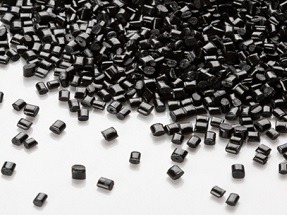Article published in May/June issue of ERJ
ERJ runs the rule again over the European compounding sector and identifies some clear strengths and weak points in the sector
Results of the ERJ European Compounding Survey 2016 – our first since 2011 – reveals a good degree of robustness, flexibility and, indeed, ambition across this sector, which features a high proportion of small- to medium-sized companies.
With an overall average rating of 3.39 out of 5 (see ratings guide p22), the automotive industry was by a fair distance the strongest market for European compounders, the survey found.
A surprise packet was the relative strength of the construction sector at 3.08, despite its reported weakness in some European countries.
Less surprising was the lowly ranking for the materials handling and mining sector, the slump in the latter industry known to have a severe impact on major rubber manufacturers including producers of tires and conveyor belts.
Right at the bottom came the oil & gas sector, reflecting last year’s slump in crude oil prices. This market barely registered a pulse in the business-sentiment ratings among rubber compounders.
The continuing strength and robustness of the German economy, and more particularly the automotive industry in the country is the stand-out point in our analysis of market strength in various European countries and regions.
Apart from a couple of ‘stable’ ratings, respondents reported sales to German-based companies as either ‘strong’ or ‘very strong’.
There were positive showings in the Benelux region and Turkey and evidence of recovery, after years of recession, within markets in Spain. Respondents also indicated steady-to-strong showings overall for markets in Italy, Poland and the Czech Republic.
On the flip side of the coin was the surprisingly low ratings for the compounds business in, Sweden, France and the UK – though there was striking variation in the responses regarding the UK market.
The main takeaway from the analysis of the markets by material type is the strength of high-volume polymers, most notably natural rubber and EPDM, relative to the more speciality materials.
Despite performing quite strongly, there was considerable variation in market sentiment among compounders when it came to high added-value polymers, such as silicones, fluoroelastomers and HNBR: some rating these markets as showing ‘very strong growth’, but others giving ‘stable’ ratings and, in the case of HNBR ‘in decline’.
Among the other materials, styrene butadiene, and nitrile rubber were consistently given below average ratings for market growth. TPEs (thermoplastic elastomers, including TPVs) scored highly, with the exception of a single ‘in decline’ rating – though the number of replies was too small to present as a representative sample set for these particular materials.
Investment projects – both on-going and those on the drawing board – offer perhaps the best guide for business-confidence levels in the European compounding sector. Here the picture was markedly positive with many companies looking to establish new plants or expand and/or upgrade their existing facilities.
Among the interesting projects is one in Wales, where Clwyd Compounders Ltd is relocating from its base of the last 25 years in Ruabon, Wrexham to a new purpose-built factory on the Wrexham Industrial Estate.
The build, which is due to start in late 2016, will double production capacity and expand laboratory and development facilities, the family-owned company said.
The “significant” investment represents the company’s continued commitment to be at the forefront of heat curable elastomers, according to Clwyd Compounders’ statement.
“We are ensuring that we can continue to innovate, and develop new compounds and processes to meet the demands of both our UK and International customers,” said Sarah Haywood, the company’s administration director.
Partnership
The increasing trend among compounders to develop sales in new market regions is also evidenced by a recently formed partnership between French compounder EMAC and Evercompounds, part of the CM Manzoni group, based in Italy.
With a production capacity of 18 kilotonnes per annum (ktpa), EMAC specialises in custom-made compounds and has expertise in areas such as nano-fillers and from work on collaborative research programmes.
However, EMAC was unable to handle large production batches at an attractive price level, in particular for EPDM compounds, said the French company.
Evercompounds has production capacity of about 60ktpa and expertise in processing EPDM and NR among other elastomers. Compounds are supplied either on a large scale or as tailor-made production to industries including automotive, cable, household appliances or building and civil engineering.
“This partnership will also be helpful for EMAC’s international growth strategy,” added the company, noting that some of its customers are looking for European or even international suppliers/partners.
“Evercompounds, originally located in Italy but present also in the European, North and South American markets, can widen its technical and commercial perspectives to the French market through its exclusive partner EMAC.”
There is significant investment in Turkey, where Rekor Kaucuk is to relocate its Istanbul plant to Eskisehir by the end of 2016: The new plant, it reported, will feature fully automated mixing machineries and other processing equipment.
Signalling its ambitions, the company stated: “We aim to be among the top five rubber compounders in Europe”.
In the same country, meanwhile, Tekno Kauçuk is bringing on-stream a new mixing plant housing three mixer lines with 25ktpa capacity starting from 2017.
Other companies are building on recent investments, as is the case with Kraiburg TPE, which is now concentrating on meeting market and customer demands, having expanded at three locations in the last two years.
Increased technical know-how and recycling are among current market demands, according to TGL SP Industries, which reported that it is increasing its research and development capabilities while also noting that “the market is looking for increased upgraded recycled materials.”



